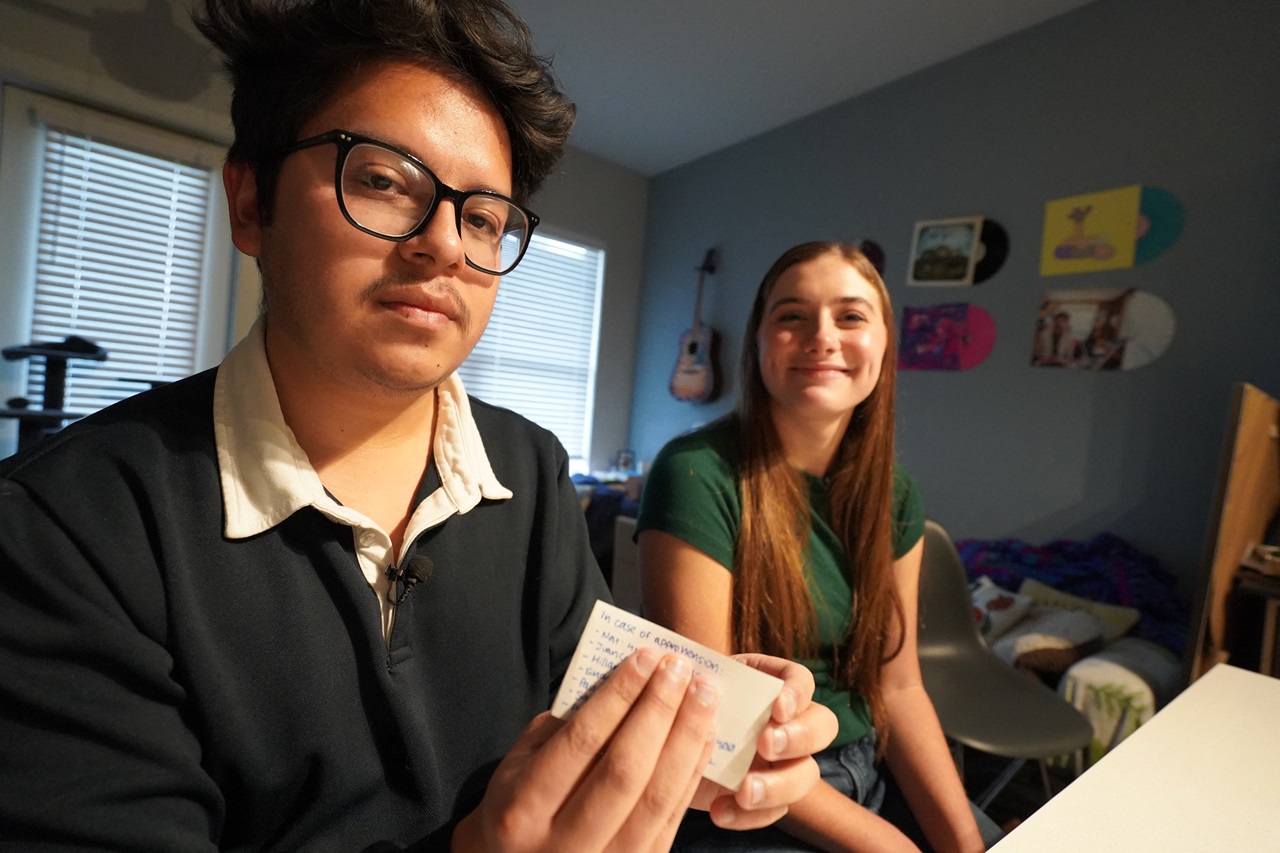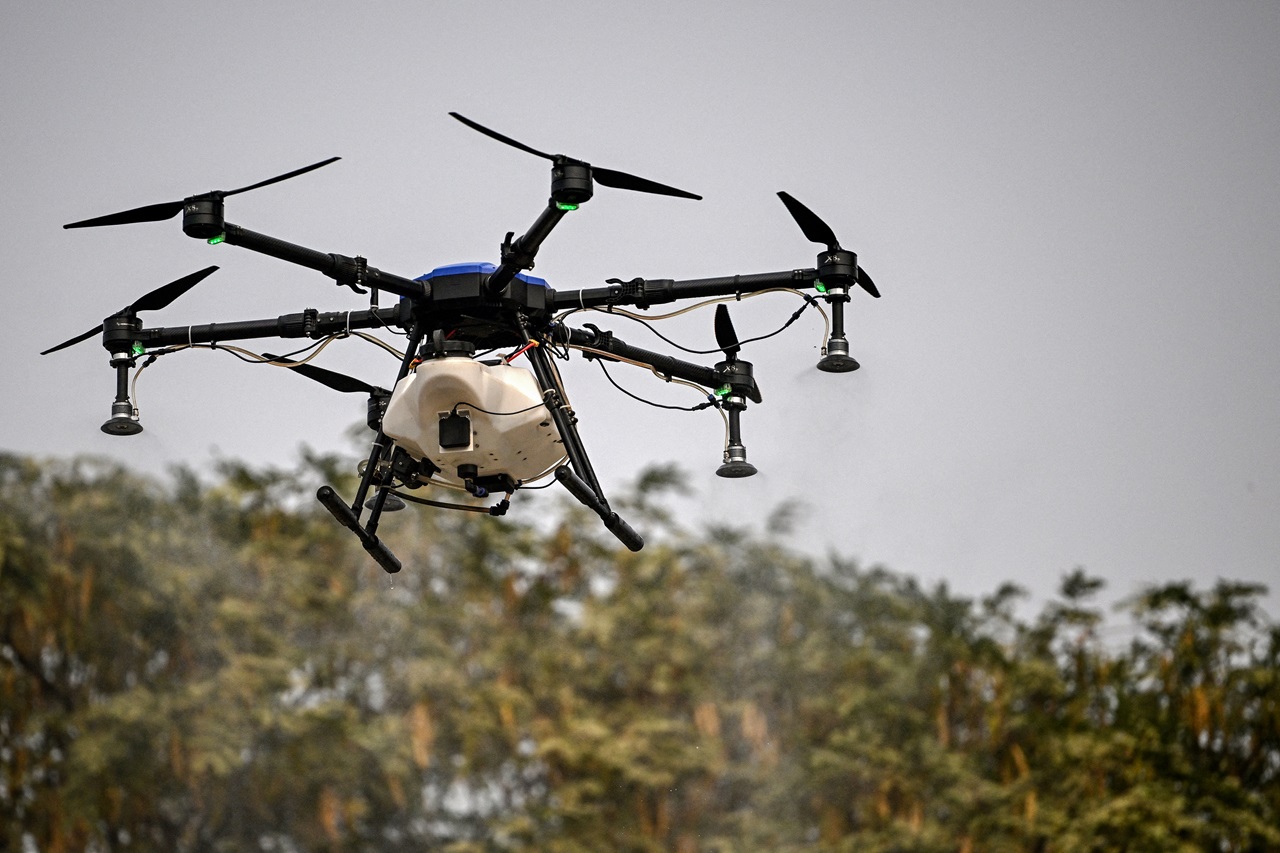
Documenting tragedy: The moral conscience of photojournalists on the US-Mexico border
This week, one picture—that of the lifeless bodies of a father and his baby daughter, face down in the shallow waters of the Rio Grande River— spoke of sacrifice, of loss, of dreams and desperation at the border of the United States and Mexico.
The photograph, shot by Mexican photojournalist Julia Le Duc of La Jornada, shows the bodies of Óscar Alberto Martínez Ramírez and Angie Valeria Martínez, a Salvadoran man and his 23-month-old daughter, who drowned in an attempt to cross the river to enter the United States.
According to an AP report, Martínez decided to swim across the Rio Grande out of frustration that his family was unable to present themselves to authorities at the U.S. Consulate to request asylum.
After successfully making it across, Martínez set his daughter on the U.S. bank and started back to help his wife, Tania Vanessa Ávalos. As his daughter saw him move away, she threw herself into the river after him. Martínez was able to grab her, but the two were swept away by the current—the young daughter tucked beneath her father’s t-shirt, arms wrapped around his neck.
Le Duc’s photograph cuts deep. The devastating image provides a dark glimpse into the cruel reality of what is happening to countless migrants — many of whom are children — fleeing desperate situations of violence and extreme poverty in Central America in search of opportunity in the United States.
The searing image draws comparison to photographs such as Nick Ut’s picture in 1972 of a naked girl burned by napalm during the Vietnam War, Kevin Carter’s 1993 photo of a starving Sudanese child crouched beneath the gaze of a vulture, the image of a lifeless Syrian child washed upon the shores of Turkey by Nilufer Demir in 2015, and Tyler Hicks’ excruciating photograph of a malnourished Yemeni girl, shot in 2018.
The visceral response that such images evoke cannot be put into words. These photographs bring the nauseating reality of human suffering into sharp focus. They are not easy for a reader to digest, they are not easy for a newsroom to publish, and they most certainly are not easy for a photographer to capture.

“There are some times that you don’t do it,” photojournalist Ada Trillo told AL DÍA when asked about the moral dilemma of documenting human tragedy and suffering.
“There are some times that you do it and it’s heartbreaking.”
Trillo spoke to AL DÍA from Juarez, Mexico, her home city along the Rio Grande, where she too is currently documenting the experiences of Central American migrants. She could only begin to imagine the enduring effects of shooting the photograph that Le Duc took.
“She is going to be traumatized forever,” Trillo said. “It’s going to be something that is going to be in her head for a long time.”
When asked her opinion on whether or not it was necessary to publish the photo of Martínez and his daughter, Trillo said that, although unfortunate, she felt that it was.
“We are in a time right now where the racism and hatred is such, from this administration and the things that they are doing are actually so cruel, that it is necessary,” she said.
Mexican photojournalist Guillermo Arias agreed with Trillo’s perspective.
“This image changed the narrative of the border situation,” he told AL DÍA. “It gave a name and a history behind [these] two corpses, otherwise overlooked by society.”
Arias has documented the U.S. border wall and Central American migration independently and for news organizations including Agence France Presse (AFP), The New York Times, Politico and CNN.
CONTENIDO RELACIONADO
“The American people, more or less, are used to seeing these types of images from overseas, but what makes this image different is the fact that it is so close,” he said.
Arias believes that Le Duc’s photo forces the U.S. to confront the impact of its rhetoric and policy on the lives of the people it often dehumanizes.
“It doesn’t matter where your position is on the immigration situation,” said Arias. “Now, it is hard not to think about a father and a daughter that died in pursuit of the American Dream.”
Miguel Real, an award winning cameraman and documentary producer who covered the Salvadoran Civil War of the 1980s, expanded on Arias’ point.
He understands the brutality that Martínez and his daughter were attempting to escape from in El Salvador. The country has been desolated by decades of violence and economic despondence, much of which links back to U.S. aiding, abetting and financing of its civil war.
In an effort to stem the supposed threat of communism in the region, Washington provided finances, weapons, training and direction to the Salvadoran military forces. A UN Truth Commission on the war found that the Salvadoran government and military was responsible for 85 percent of the acts of violence committed in the conflict, which resulted in more than 75,000 deaths. The impacts are still felt today.
“People have got to understand the reality of Central America,” said Real.
“In the United States,” he continued, “they really don’t understand what it is to live in terror or to live with insecurity.”
For many Central Americans, the only way to survive is to leave their country.
“You are at the limit, you cannot do anything more,” explained Real. “There is no more opportunity. There are no more chances. There is nothing. But how do you explain that to the American people?”










DEJE UN COMENTARIO:
¡Únete a la discusión! Deja un comentario.